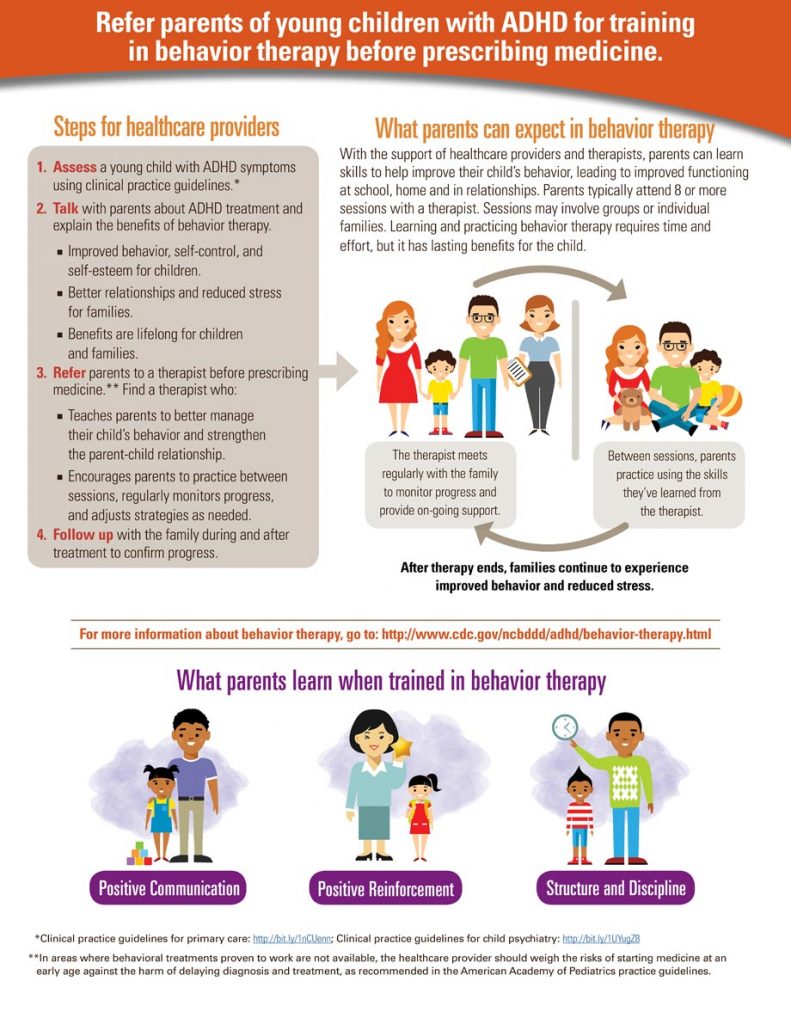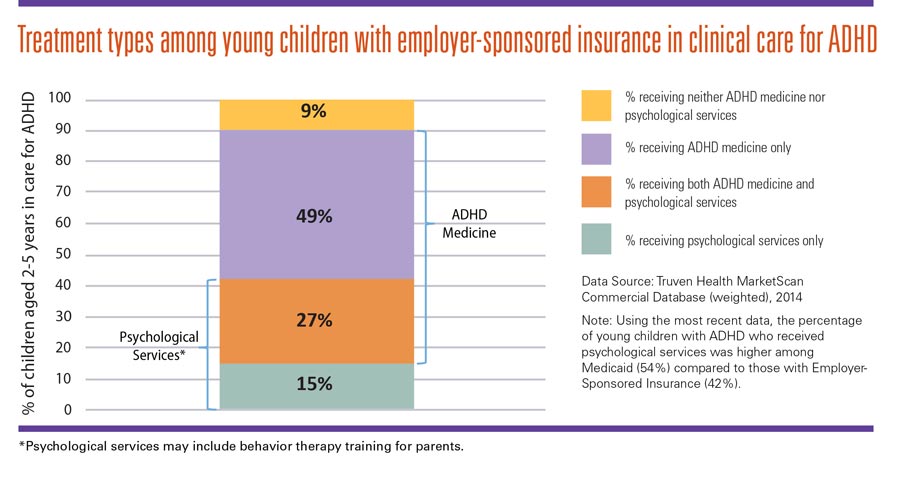April 7, 2020 by John Fernandez
Treatments for Childhood ADHD: Too Many Meds? (Infographic)

When it comes to kids with attention deficit hyperactivity disorder (ADHD), behavioral therapy can be just as useful as drugs — and without the potential threat of long-term side effects posed by prescription medication, according to the U.S. Centers for Disease Control and Prevention (CDC).
“Behavior therapy is an effective treatment that improves ADHD symptoms without the side effects of medicine. It is an important first step for young children with ADHD and most effective when delivered by parents,” the CDC says. “However, more young children are taking medicine for ADHD than receiving psychological services, which may include behavior therapy,” the CDC reported in the recent issue of Vital Signs, an agency publication. (See infographics below.)
ADHD Defined
ADHD is a biological disorder, characterized by hyperactivity, impulsiveness and attention problems, says Javier Hiriart, M.D., a pediatrician and physician with Baptist Health Primary Care. In the U.S., about 6 million children have been diagnosed with ADHD. Historically, treatment for the disorder has been fiercely divided between two extremes – no medication or over-medication – with backlashes from either camp, Dr. Hiriart says.
“The pendulum usually swings too far to either one side or the other,” he says. “There has to be a middle ground, somewhere in between – both rational and appropriate.”
Every child with ADHD represents a unique situation, and treatment for the condition should be based on a variety of factors, including the age and the severity of the condition, Dr. Hiriart says. Parents should discuss a child’s behavior, and academic or social difficulties with their pediatrician or family doctor, Dr. Hiriart says.
Importance of Annual Physicals
Before jumping to conclusions, parents should remember that there is a wide range of age-appropriate behaviors, especially in younger children, he says. For example, some toddlers can sit through an entire movie, but others will squirm through short television shows. However, if the level of hyperactivity escalates as the child ages, parents should ask the family physician to screen the child for ADHD or related conditions.
Lookalike Conditions or ADHD?
Vision or hearing problems, dyslexia or other learning disabilities can masquerade as ADHD. Depression, anxiety or other emotional problems can also contribute to hyperactivity or inattentiveness. Sleeping disorders and lack of enough sleep can also mimic the symptoms of ADHD, Dr. Hiriart says. All of those topics and a child’s academic performance are key elements of well-child checkups, he says.
Treatment Options
If your child receives a diagnosis of ADHD, behavior therapy and an individual education plan (IEP) may be sufficient for treatment, he says.
“But some cases are very severe and children need medication,” Dr. Hiriart says. The situation can be compared to asthmatic cases, where children with mild cases of asthma might not need daily prescription medicine — but severe cases of asthma might require regular doses of medicine, with periodic review of the need for ongoing treatment.
The same is true in ADHD cases, where the condition interferes with a child’s learning development, school performance, mental health and self esteem, Dr. Hiriart says. But, in addition to medication, parents should work closely with a family therapist, physician and educators to create a comprehensive treatment plan. The CDC agrees.
“Most families will benefit from behavior therapy and there are instances where medicine may be appropriate. Healthcare providers and families can work together to make sure children with ADHD are receiving the most appropriate treatment,” the CDC says.


top stories












There are no comments